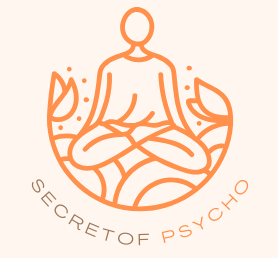Table of Contents
ToggleIntroduction
Sleep is a crucial aspect of our overall health and well-being. However, for many individuals, achieving a good night’s sleep can be challenging due to various sleep disorders. In this comprehensive article, we will explore the different types of sleep disorders, their symptoms, and the diagnostic methods used to identify and address them.
I. Types of Sleep Disorders
A. Insomnia
Insomnia is one of the most common sleep disorders, characterized by difficulty falling asleep, staying asleep, or experiencing non-restorative sleep. It can be caused by stress, anxiety, depression, or certain medical conditions.
B. Sleep Apnea
Sleep apnea is a condition where breathing repeatedly stops and starts during sleep. There are two main types: obstructive sleep apnea, caused by the relaxation of throat muscles, and central sleep apnea, related to a failure of the brain to signal the muscles to breathe.
C. Narcolepsy
Narcolepsy is a neurological disorder that affects the control of sleep and wakefulness. sleeping-disorder-test on individuals with narcolepsy may experience sudden and uncontrollable episodes of sleep during the day.
D. Restless Legs Syndrome (RLS)
RLS is characterized by uncomfortable sensations in the legs, often described as tingling, creeping, or itching, leading to an irresistible urge to move the legs. Symptoms typically worsen during periods of inactivity.
E. Circadian Rhythm Disorders
Circadian rhythm disorders involve disruptions to the body’s internal clock, leading to problems with sleep-wake cycles. Conditions such as shift work sleep disorder and delayed sleep phase syndrome fall under this category.
II. Symptoms of Sleep Disorders
A. General Symptoms
- Fatigue and daytime sleepiness.
- Difficulty concentrating and memory problems.
- Mood disturbances, including irritability and depression.
- Impaired performance at work or school.
- Relationship difficulties.
B. Specific Symptoms for Each Disorder
- Insomnia: Difficulty falling asleep, waking up frequently during the night, waking up too early, and not feeling refreshed upon waking.
- Sleep Apnea: Loud snoring, gasping for breath during sleep, and excessive daytime sleepiness.
- Narcolepsy: Sudden episodes of sleep attacks, cataplexy (sudden loss of muscle tone), sleep paralysis, and hallucinations.
- Restless Legs Syndrome: Uncomfortable sensations in the legs, especially during periods of inactivity.
- Circadian Rhythm Disorders: Difficulty falling asleep or waking up at the desired times, and difficulties adjusting to shift work schedules.
III. Diagnosis of Sleep Disorders
A. Clinical Evaluation
- Detailed medical history.
- Sleep diary.
- Physical examination.
B. Sleep Studies
- Polysomnography (PSG): Monitors various physiological variables during sleep, including brain waves, eye movement, heart rate, and muscle activity.
- Home Sleep Apnea Testing (HSAT): Portable devices for diagnosing sleep apnea in the home environment.
C. Actigraphy
A wrist-worn device that monitors movement and light exposure to assess sleep patterns over an extended period.
IV. Treatment Options
A. Lifestyle Modifications
- Sleep hygiene practices.
- Regular exercise.
- Healthy diet.
Abnormal behavior:
- Cognitive Behavioral Therapy for Insomnia (CBT-I).
- Relaxation techniques.
- Biofeedback.
C. Medical Interventions
- Medications for specific sleep disorders.
- Continuous Positive Airway Pressure (CPAP) therapy for sleep apnea.
- Medications to manage symptoms of restless legs syndrome.
Conclusion
Sleep disorders can significantly impact daily functioning and overall health. Early recognition and appropriate intervention are crucial for managing these conditions effectively. If you suspect you may have a sleep disorder, seek guidance from a healthcare professional who can help determine the most suitable course of action for your specific situation. Remember, a good night’s sleep is essential for a healthy and fulfilling life.

